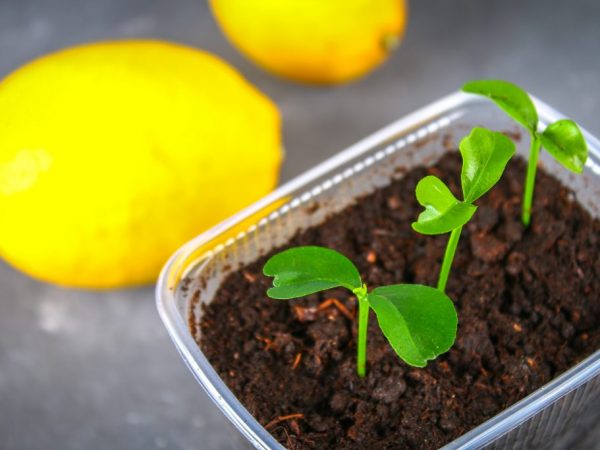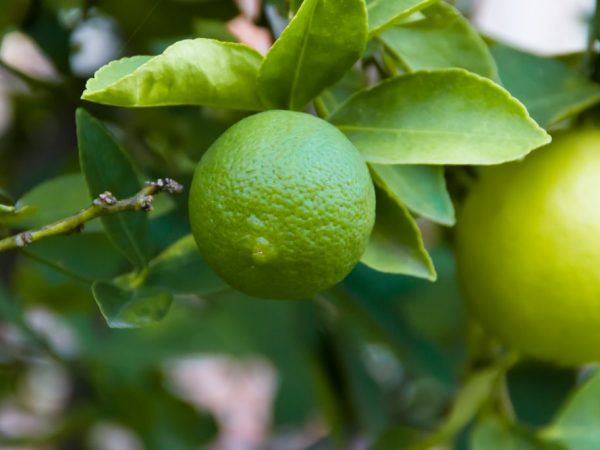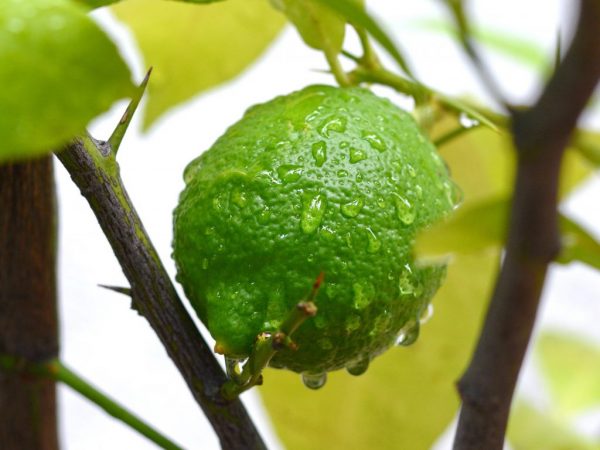How to grow lemon
Lemon is grown at home, adhering to a number of rules that involve planting and leaving it until the fruit ripens on the plant and after it.

Growing lemon
Lemon characteristic
Indoor lemon, subject to the rules of care, has been growing for 30 years. After setting, the fruits are poured for 9 months.
Indoor types of lemons are usually grown at home:
- Pavlovsky;
- Anniversary;
- Mayer.
These varieties are characterized by fast fruiting and good productivity when caring for lemon at home.
After purchasing a finished varietal seedling, flowering is expected in 2-3 years.
Growing lemon
Lemon is grown from seed. The main mistake of novice hobbyists in the cultivation of lemons is that they take old dried seeds for planting. The secret is that it is better to plant a fresh seed extracted from lemon. It is pre-washed. This will increase the number of seedlings.
To increase the speed and quality of seed germination, the following technique is used: wet lemon seeds are freed from the hard shell with a knife: it prevents the early appearance of a sprout.
It takes 7-30 days from sowing to the appearance of shoots.
Landing in the soil
Planting seeds in prepared containers of shallow depth with drainage holes allows you to grow a lemon at home. A 2 cm layer of expanded clay or vermiculite is placed in the bottom of a pot or other container, while excess moisture flows down, does not linger and is removed from the soil.
Lemon is grown in self-prepared soil. To do this, mix soil from the garden, sand and humus. A little charcoal is added to help fight bacterial infections. Lemon can also be grown in purchased citrus growing medium.
Seeds are sown in winter, in February: an increase in daylight hours has a positive effect on the sprouts.
Seeds should be planted in the ground to a depth of 2 cm. It is allowed to put several in one container. Containers with planted seeds are sent to a greenhouse or another warm place, covered with a film or bag, and prepared for transplantation in the spring.
Soon the seedlings are planted. Choose strong and resistant plants after 3-4 leaves appear. This happens in the spring.
Plant care
A lemon garden will grow if the height and light conditions in the room allow citrus trees to thrive. The height between the stand and the ceiling is from 2 m. The tree does not like movement. If it takes up space on the window, it is undesirable to move it. For even development, the lemon is unrolled a few millimeters after 10 days.
Each fruit is fed by 9-10 leaves, so they are protected from shedding. Trimming the tops of the branches is carried out to obtain new shoots and increase the number of leaves.

Protect the plant from drafts
When leaving, an important factor in the growth of a lemon in a pot is maintaining a temperature of 22-25 ° C.During the flowering period, the lemon will need coolness. Growing a lemon in summer suggests that it is important for it to stand in the sun for 2 hours. In winter, the tree will need 5-6 hours of light. The humidity is increased to 70%. The plant is set aside from batteries, it is good to have an aquarium or a humidifier to create a wet zone, the leaves are sprayed with a spray. There should be no drafts in the room.
Summer watering should be strenuous. A pot of citrus is watered 2 times a day, morning and evening. When used correctly, there is no stagnant water drain. A tray for collecting water is installed at the bottom. Watering is carried out with settled soft water.
Pruning
You should take care of the lemon at home with pruning. It affects the formation and maintenance of the growth of the bush, as well as the pinching of the green cone. Gardeners undertake to cut bushes on a large scale in the spring. 5-6 leaves are left on the branches, the rest are torn off. Planting material is obtained from the removed branches and leaves. When a pair of lower leaves are removed, the twig is placed in water, after which it is time to plant and root it in the substrate.
After receiving leafy shoots, the stalk receives top dressing, it is looked after as if it were an adult plant. When the plant reaches a height of 25 cm, the top is pinched to it and thus growth is limited. The central and lateral shoots are left in the amount of 4 pieces, the rest are removed on the ring.
Lateral shoots are grown up to 25 cm, after which they need to be pinned. The bush is formed twice, as a result, leaves remain on the tree, and flower buds form on the branches. Citrus is prepared for fruiting.
Reproduction
The breeding process is lengthy. The seedling is grafted into a tree that bears fruit. Grafting of a grown plant is carried out by budding or splitting to obtain a cultivated tree, otherwise the wild will develop slowly and give poor-quality fruits. If the seedling is not crossed, it will become an ornamental tree that is resistant to disease. When forming the crown, the decorative bush is done carefully, so that it does not stretch out with branches, it takes up space in size.
Pollination
Pollination begins after the creation of favorable conditions: temperature - 25 ° C, humidity - 70%. Dust the lemon with a soft brush, a piece of fur or a cotton swab. It is carried out over the stamens of one flower, collecting pollen, and transferring it to the pistil of another. This is done with all flowers. If the results are uncertain, the plants must be re-pollinated.
Golden-colored fruits reach maturity in 180-230 days.
Fertilizer

The tree needs to be fertilized regularly
If you do not feed the plants with fertilizers, at home the lemon leaves lose their color, and problems with fruiting arise. The leaves become light, there is no flowering, the ovaries fall off, the fruits are not obtained. If a lemon from a seedling or seed is fed in large proportions, the consequences will be the same.
It is important to observe the dose of feeding, only in this way the plant remains blooming and develops correctly.
Agrotechnical causes of diseases
If the citrus fruits on the windowsill do not have enough moisture, this is manifested as follows:
- the top layer of the earth turns gray, the lump crumbles in the hands;
- if you slap the pot, a ringing sound is heard;
- by the bush, the leaves have curled up into a tube, the tops have wilted;
- after a while, leaves, flowers and ovaries fall.
If the transplant was not carried out for a long time, the land did not change, the tree gave little fruit, fertilizers could not save the plant. Another problem is the formation of compaction of the earth, due to which the water does not wet the entire substrate.
Diseases and pests
Lemon care does not always have the correct content and is poorly carried out, because of this, the plant is exposed to pests and parasites, and diseases arise. The following types of citrus ailments are distinguished:
- Xylopsorosis and trister. These viral diseases cannot be cured.
- Hommoz. It is an infectious disease.It is manifested by the defeat of the tree trunk.
- Malseco. It is an infectious disease. Because of him, the leaves turn red, the tree dies;
- Root rot. This is a fungal disease. To combat it, the damaged parts are removed, the tree is transplanted into the renewed soil.
If the lemon has been poorly cared for, parasites are dangerous to it. Another reason for the appearance of pests is untimely fertilizing with fertilizers.
Conclusion
Knowing the peculiarities of its cultivation helps to grow homemade lemon. If you properly care for homemade lemon, do not make mistakes in planting, watering, reproduction, pruning and feed on time, the plant will produce healthy fruits.


